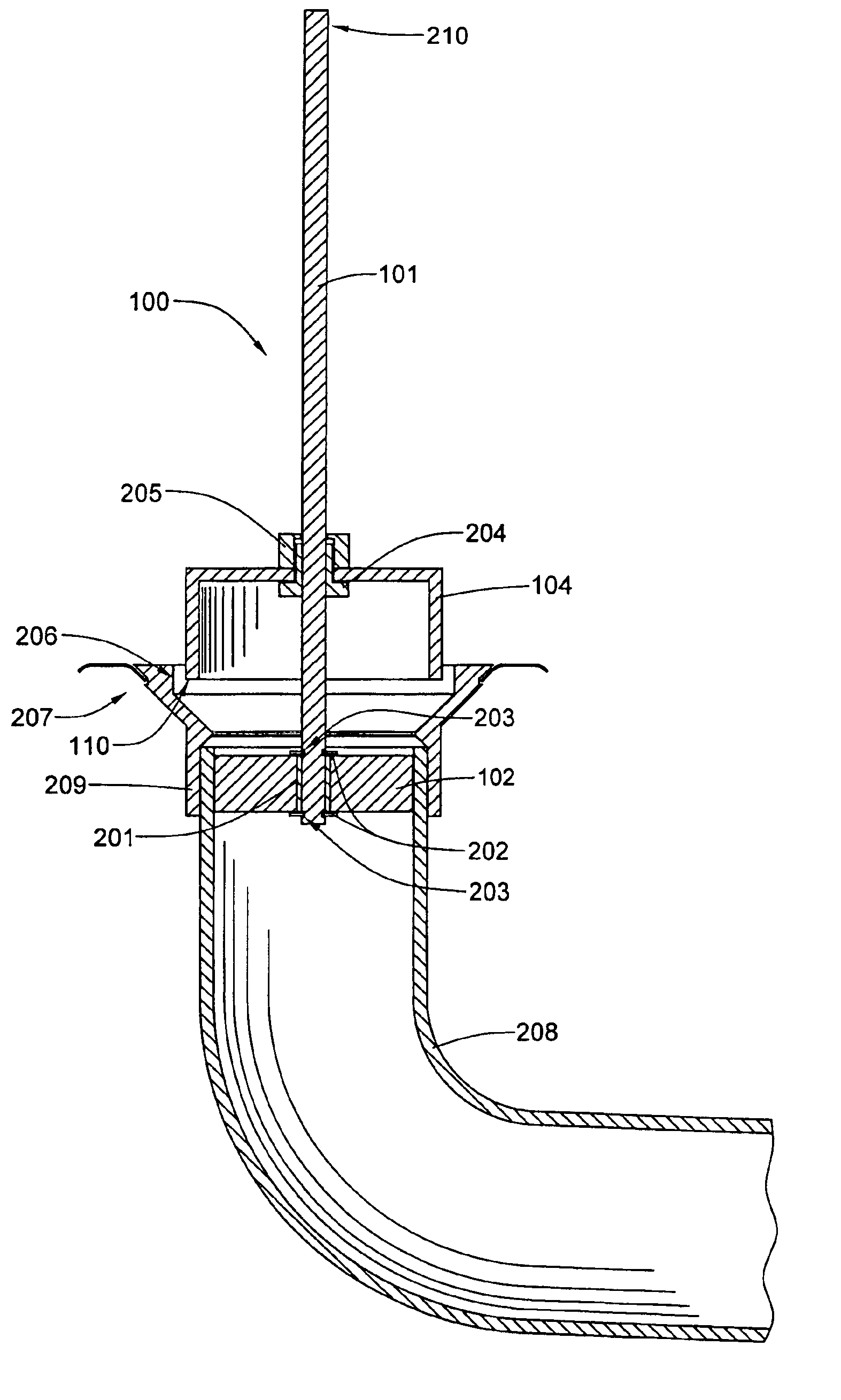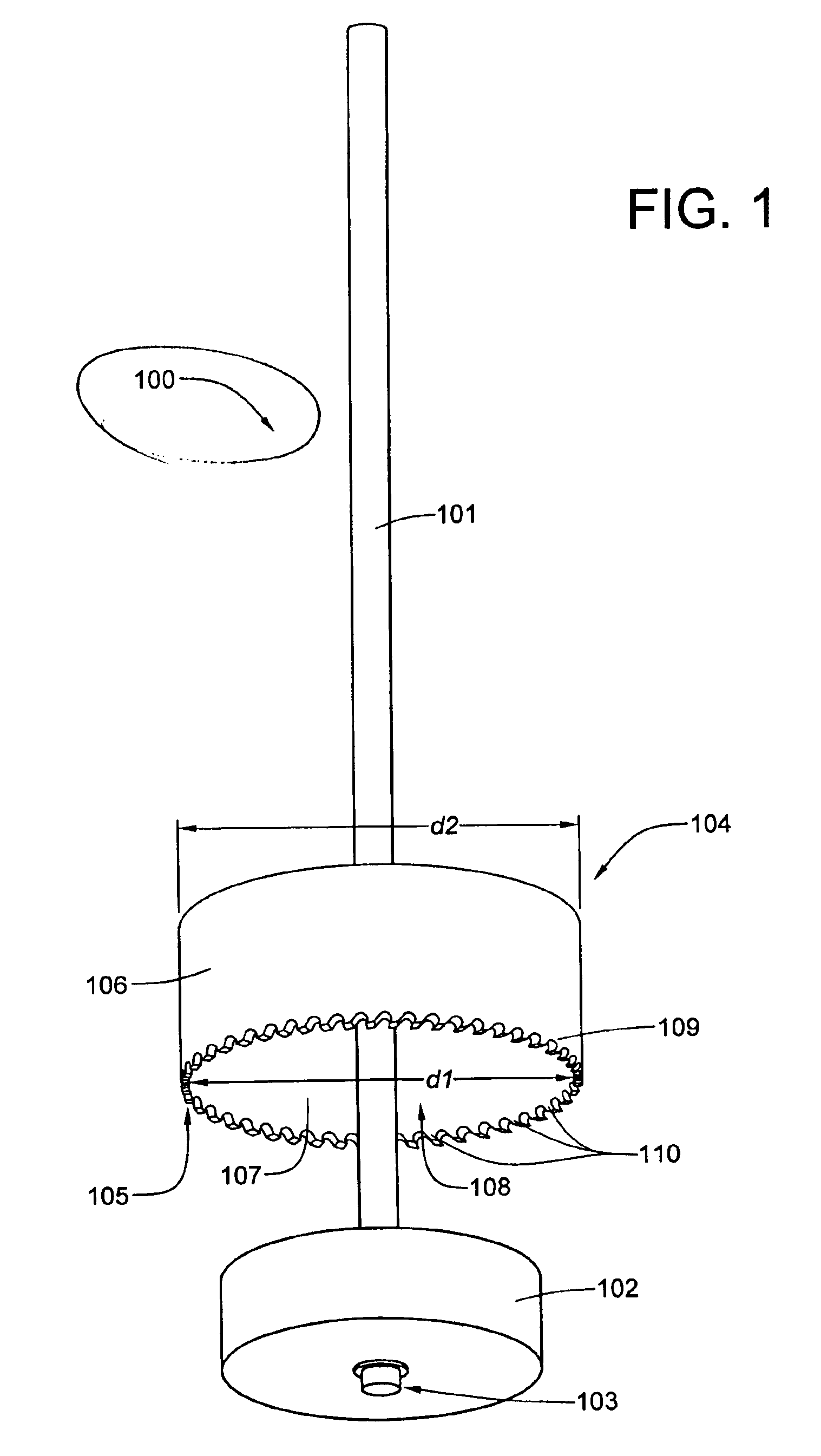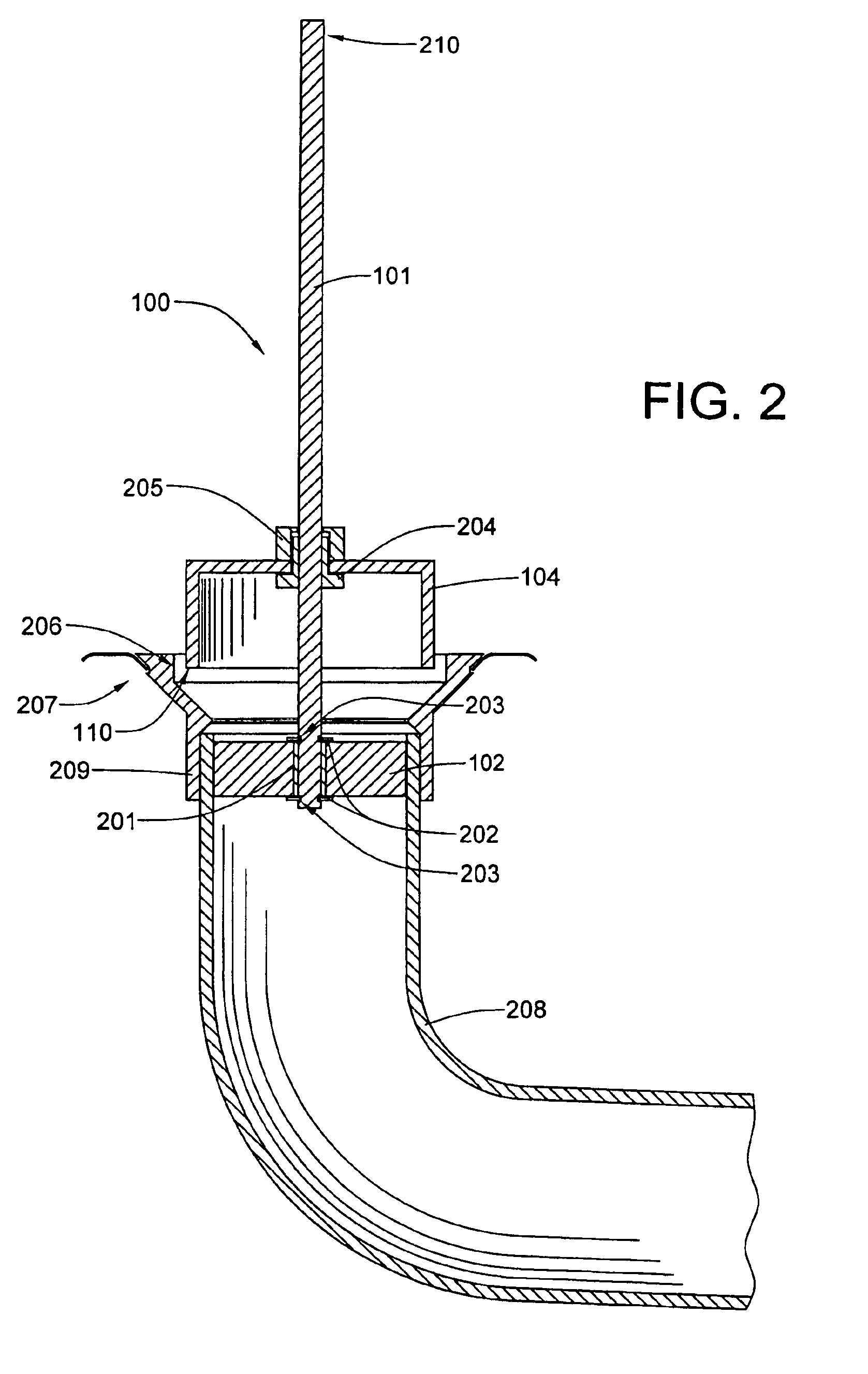Pipe fitting removal tool
a technology for removing tools and fittings, applied in the field of plumbing tools, can solve the problems of abs flange deformation under pressure, abs flange deformation and eventually breakage, steel flange rust and eventually breakage, etc., and achieve the effect of easy chemical bonding
- Summary
- Abstract
- Description
- Claims
- Application Information
AI Technical Summary
Benefits of technology
Problems solved by technology
Method used
Image
Examples
Embodiment Construction
[0016]The present invention, which provides both a method and a tool for removing a pipe fitting made of polymeric plastic material from a pipe to which it has been chemically bonded. The pipe fitting removal tool and the process of removing a pipe fitting will now be disclosed in the context of removing a water closet flange from the waste pipe to which it is attached, with reference being made to the attached drawing figures.
[0017]Referring now to both FIG. 1 and FIG. 2, a preferred embodiment of the tool 100 for removing a pipe fitting, such as a water closet flange, includes an axial shaft 101, a cylindrical guide body 102 attached to a lower end 103 of the shaft 101, the guide body having an outer diameter slightly less than the inner diameter of a water closet waste pipe so that it is slidably insertable therein, and a rotary cutter 104, having an inside diameter slightly greater than the outer diameter of the waste pipe, mounted above the guide body 102. The rotary cutter 104...
PUM
| Property | Measurement | Unit |
|---|---|---|
| diameter | aaaaa | aaaaa |
| outer diameter | aaaaa | aaaaa |
| pressure | aaaaa | aaaaa |
Abstract
Description
Claims
Application Information
 Login to View More
Login to View More - R&D
- Intellectual Property
- Life Sciences
- Materials
- Tech Scout
- Unparalleled Data Quality
- Higher Quality Content
- 60% Fewer Hallucinations
Browse by: Latest US Patents, China's latest patents, Technical Efficacy Thesaurus, Application Domain, Technology Topic, Popular Technical Reports.
© 2025 PatSnap. All rights reserved.Legal|Privacy policy|Modern Slavery Act Transparency Statement|Sitemap|About US| Contact US: help@patsnap.com



